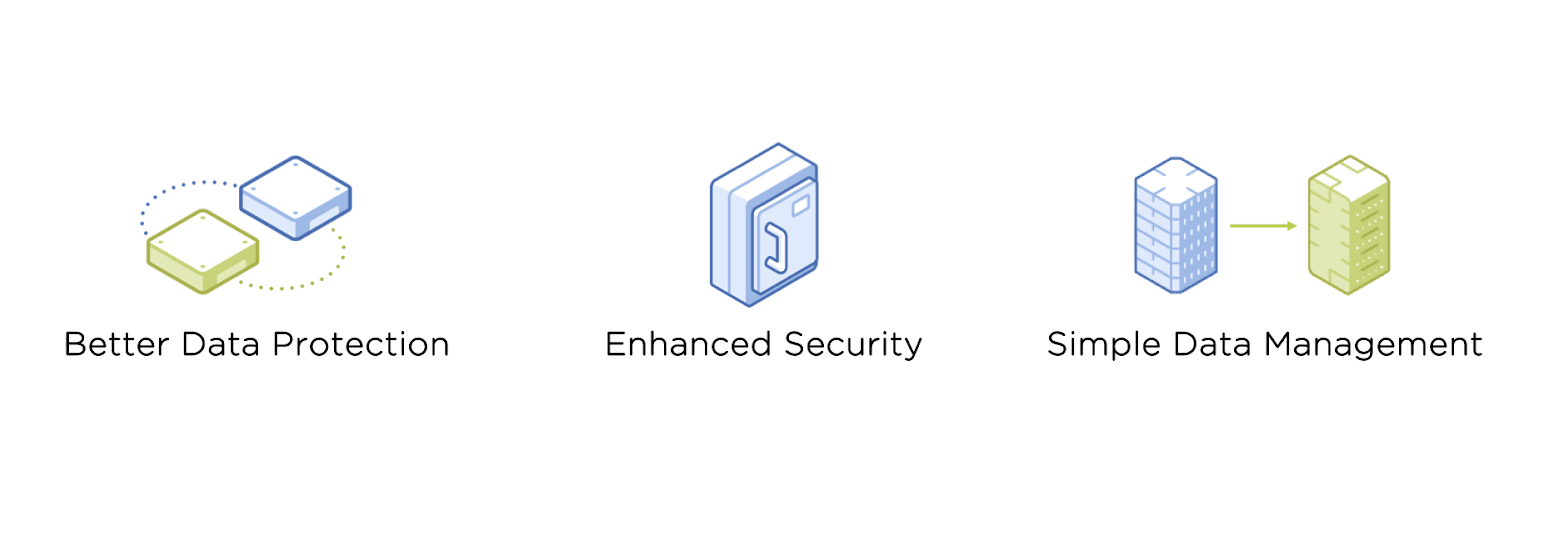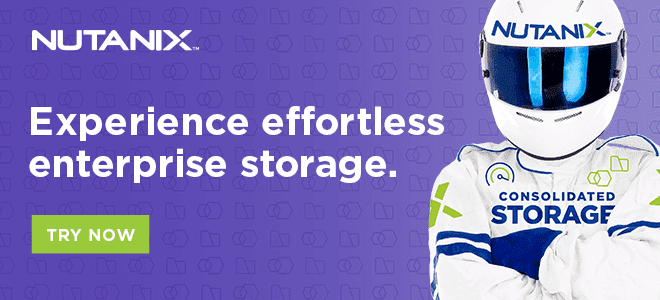Upgrade Your Data Services For A Hybrid Multi-Cloud World
By Santhosh Siruvole, Sr. Product Marketing Manager - Nutanix Unified Storage
Are you in control of your Data?
IT professionals have to deal with an expanded charter now that enterprise data can be moved easily across edge, core and cloud. Optimizing application and user performance, managing data protection, and asserting access controls across a hybrid multi-cloud environment requires a new look at how data services are designed and deployed. And without a plan to standardize data services across locations, it can be much harder to synchronize data across multiple sites, control how data is accessed, and implement tiering for cost-effective targets.
Furthermore, shared storage is a rich target for cybercriminals to hijack valuable customer, financial, or sensitive information and extort payment in return for access to the data. Hence, revving up ransomware defense is a top priority for CIOs and other business leaders who are actively looking for storage security strategies against malicious cyberattacks. Unfortunately, legacy storage systems are often unable to handle nor offer a graceful solution to the critical challenges.
What are Enterprise Data Services?
IT organizations pursuing digital transformation must modernize storage infrastructure to meet the demands of new workloads. Exponentially growing unstructured data and the modern workloads such as big data analytics, AI/ML apps, cloud native apps require data services with increased performance, availability, capacity, and agility in addition to having an integrated ransomware defense. To meet the stringent requirements, organizations are increasingly adopting software-defined, scale-out architectures and are moving away from the traditional multi-controller arrays. Advancements in storage technology is enabling enterprises to consolidate multiple workload types together to consume data services from a unified storage system. Enterprise Data Services that meet the requirements include:
- Running consolidated file, object, and block-based storage systems to accommodate workloads that need to use different access methods.
- Cyber-resiliency and ransomware protection that is built into modern IT infrastructure making it easy to respond to increasing regulatory requirements, data governance tasks, and risks coming from a growing number of security threats.
- Features such as scalability, flexibility, operational efficiency, and performance characteristics
- Working with multistage data pipelines for big data analytics, artificial intelligence, and other modern workloads
- Extend platform to the public cloud enabling a multi-cloud environment giving the users the flexibility to move data where it’s needed, increasing the demand for advanced data services
- Support for cloud-native apps such as Kubernetes-based automation and orchestration tools that dominate cloud deployments today.
Why are Enterprise Data Services Important?
Data services that allow enterprises to consolidate workloads using different access methods onto a single storage platform promise improved administrative productivity as well as compelling economics. Newer storage technologies like NVMe, along with an increased ability on the part of software-defined offerings to handle the performance, availability, and security requirements of mission-critical workloads, have enterprises looking to replace legacy storage area network (SAN) and network attached storage (NAS) systems with more flexible, more scalable, and easier-to-use software-defined solutions that offer better economics. Moreover, IT managers think that the data services that are based on a unified storage platform provide a better fit for the more dynamic, hybrid multi-cloud environments that are the future of digital infrastructure.
When workloads can be consolidated, many benefits can accrue. Data Services built on unified storage systems are easier to buy and deploy, and the associated infrastructure costs less, consumes less energy, and takes up less floor space than dedicated block, file, and object storage silos. The Data Services also make it faster and easier to share data across different workloads, a feature important to enterprises working with multistage data pipelines for big data analytics, artificial intelligence, and other modern workloads. Unified storage improves productivity, as the same administrative skill set can be applied to managing the storage for more workloads. The economic justifications for consolidating storage workloads are compelling. Given the significant interest in enabling denser workload consolidation, software- defined infrastructure tends to be more easily compatible with hybrid cloud environments than more hardware-defined legacy infrastructure.
Nutanix Unified Storage Offers a Simple and Secure Enterprise Data Services Solution
Nutanix Unified Storage™ is a software-defined storage solution that offers Data Services for simple data management and integrated ransomware protection to manage and secure enterprise data. Files Storage Service™ delivered via Nutanix Unified Storage offers a scale-out file storage solution with data services to store, manage, and scale unstructured data. The latest version, Files 4.2, offers better data protection with Smart Sync, enhanced security with role based access control and simple data management. Smart Sync allows for better control of data replication with policy based asynchronous replication of home directories, user profiles, and shared folders.

Nutanix Unified Storage combines with Nutanix Data Lens, a SaaS-based application with deep insights into your unstructured data to stop bad guys in their tracks. With detection, blocking, and monitoring capabilities, IT admins are able to track suspicious activity and prevent attacks from happening in the first place. With Nutanix Data Lens, Nutanix Files delivers a full spectrum of ransomware protection supporting key defense-in-depth and critical cybersecurity initiatives like a Zero Trust Architecture (ZTA). The latest Data Lens release comes with ransomware blocking and recovery enhancements.
The latest release of Files Storage 4.2 and the Data Lens™ service detect ransomware early based on behavioral anomaly detection. Once an attack is detected, configurable remediation policies allow for automated blocking of the offending client or user from accessing entire file shares on the file server. In addition, users can set a policy to make all shares on the file server to be read-only so that the malware is stopped from propagating to other nodes in the cluster. Finally, to aid the recovery effort, Data Lens automatically creates an out-of-band snapshot that users can use to restore the affected files from right at the time of attack.
In addition, many-to-one replication is currently available as a tech preview. Nutanix Files offers policy-based asynchronous replication of shared folders while synchronizing data across multiple sites to a central location. Files 4.2 further enhances security with role-based access controls (RBAC) for users and applications to securely access APIs and files data services. The new release comes with improved granular security management using the Prism Central™ management tool so that IT/Storage admins can define policies for control of file server, file share configuration or admin access to specific users. The release also offers policy based standard data tiering that can be configured right from the file server console.
Conclusion
Managing a hybrid multi-cloud environment requires taking a new look at how data services are deployed and managed. Not knowing where your enterprise data resides and who or how the data is accessed can have serious consequences. With Files 4.2 and Data Lens, Nutanix Unified Storage helps organizations to take control of the enterprise data with enhanced role based access control (RBAC) and become cyber resilient with the ability to detect threats quickly so that they can respond in real-time and recover quickly to restore operations in the unforeseen event of such attacks.
Additional Resources
- Business Value of Nutanix Unified Storage - White Paper
- 2022 Gartner Magic Quadrant: Nutanix again named a Visionary for Distributed File Systems and Object Storage
- Get Data Lens for Free: Build a Fortress with Data Lens for Free!
- Test Drive: Test Drive Unified Storage
- Videos: YouTube Playlist
[1] https://cybersecurityventures.com/global-ransomware-damage-costs-predicted-to-reach-250-billion-usd-by-2031/
© 2022 Nutanix, Inc. All rights reserved. Nutanix, the Nutanix logo and all Nutanix product, feature and service names mentioned herein are registered trademarks or trademarks of Nutanix, Inc. in the United States and other countries. Other brand names mentioned herein are for identification purposes only and may be the trademarks of their respective holder(s). This post may contain links to external websites that are not part of Nutanix.com. Nutanix does not control these sites and disclaims all responsibility for the content or accuracy of any external site. Our decision to link to an external site should not be considered an endorsement of any content on such a site. Certain information contained in this post may relate to or be based on studies, publications, surveys and other data obtained from third-party sources and our own internal estimates and research. While we believe these third-party studies, publications, surveys and other data are reliable as of the date of this post, they have not independently verified, and we make no representation as to the adequacy, fairness, accuracy, or completeness of any information obtained from third-party sources.
This post may contain express and implied forward-looking statements, which are not historical facts and are instead based on our current expectations, estimates and beliefs. The accuracy of such statements involves risks and uncertainties and depends upon future events, including those that may be beyond our control, and actual results may differ materially and adversely from those anticipated or implied by such statements. Any forward-looking statements included herein speak only as of the date hereof and, except as required by law, we assume no obligation to update or otherwise revise any of such forward-looking statements to reflect subsequent events or circumstances.
